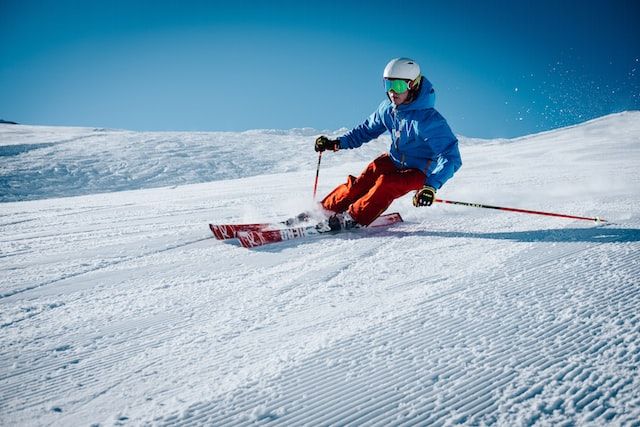
Winter Sports TBI Awareness Month
With winter comes all the sports you’ve missed during the warmer months—ice hockey, snowboarding, skiing, snowmobiling, and more. Whether you’re looking forward to your yearly trip to the slopes with the family or gathering on the ice to skate with friends, winter sports are a great way to get outdoors and stay active in the cold weather.
Still, they come with a warning label. Winter sports can be dangerous, specifically regarding the risk of traumatic brain injuries (TBIs). January is Winter Sports TBI Awareness Month, and now is a good time to remember that a TBI can happen to anyone and that you can help prevent them.
What Do You Need to Know About Winter Traumatic Brain Injuries?
If you’re excited to get out and enjoy the snow and the winter sports that come with it, you’re not alone. Flying down the slopes on skis or snowboards is exhilarating, and there’s nothing like going ice skating and gliding across the frozen rink. But these high-speed sports create the perfect recipe for a TBI.
TBIs happen when external force impacts the brain, like in a fall or if a hard, flying object hits you in the head. These hard impacts can cause concussions, coup-contrecoups, and contusions, and TBIs collectively are a leading cause of death for people under age 44. They can also cause short- and long-term disabilities and affect children’s brain development.
A TBI can be easy to miss, especially since injuries like concussions don’t always come with visible symptoms. TBIs can cause a range of symptoms, including headache, nausea or vomiting, confusion, dizziness, fatigue, and trouble with speech. The person might experience sensory problems like blurry vision or changes in smell or taste. While a person can lose consciousness when they sustain a TBI, they may remain conscious throughout. They may also struggle with their memory, mood, and concentration after the injury.
Why Are TBIs More Common in Winter?
Even aside from winter sports, the amount of ice on the ground as it gets colder outside increases the risk of a TBI. It makes you more likely to slip and fall, which is one of the most common ways people get TBIs year-round. With ice on the ground, you’re also more likely to get into a car accident, as ice makes it harder to stop and avoid obstacles on the road.
Many winter sports involve moving at high speeds over slippery surfaces. Each of these sports carries a high risk of slipping and falling or being involved in other kinds of accidents that can result in trauma to the brain. A 2020 study in Clinical Biomechanics showed that head injuries made up 47% of injuries sustained from skiing and snowboarding and are the leading cause of death in these sports.
Participating in any sport increases the risk of a TBI, but with winter sports, it’s even more important to protect yourself against them, especially since you may not see the danger right away, such as with black ice on the ground. You can take steps to prevent TBIs so that you can continue to participate in winter sports. Plus, knowing what to do if you do get injured helps reduce the likelihood of complications.
How Can You Prevent Traumatic Brain Injuries?
Taking proper safety precautions for the sport you participate in is the easiest way to prevent TBIs. That means wearing protective gear while skiing, snowboarding, playing ice hockey, and other sports where you’re likely to fall or get hit with a hard object, like a hockey puck. Wearing a helmet drastically reduces your risk of a TBI. Make sure your helmet fits snugly and covers your head, and check for an ASTM certification to ensure it’s been tested for effectiveness.
Check the weather and road and slope conditions before you go out so you’re aware of avalanche conditions and other important factors. Know how and where to get medical care in the event of an injury, too. Sometimes, even if you do all the right things, a TBI still can happen. If you have quick access to medical care, you get faster treatment, which lowers the risk of serious complications and death, especially with serious TBIs like contusions. Seeking prompt medical attention helps get you the right diagnosis as soon as possible, which leads to the correct treatment, even if you just need to rest for a few days.
During Winter Sports TBI Awareness Month, it’s vital to know how to protect yourself and what to do if you get injured. Having these resources helps you avoid a TBI and take quick action if you or someone you know gets one. That way, you can spend more time on the slopes this season.
Research and materials for this article were compiled, written, and distributed on behalf of the National Public Health Information Coalition. The views and opinions expressed in this blog are those of the various authors. They do not necessarily reflect the official policy or position of the National Public Health Information Coalition or its members.

